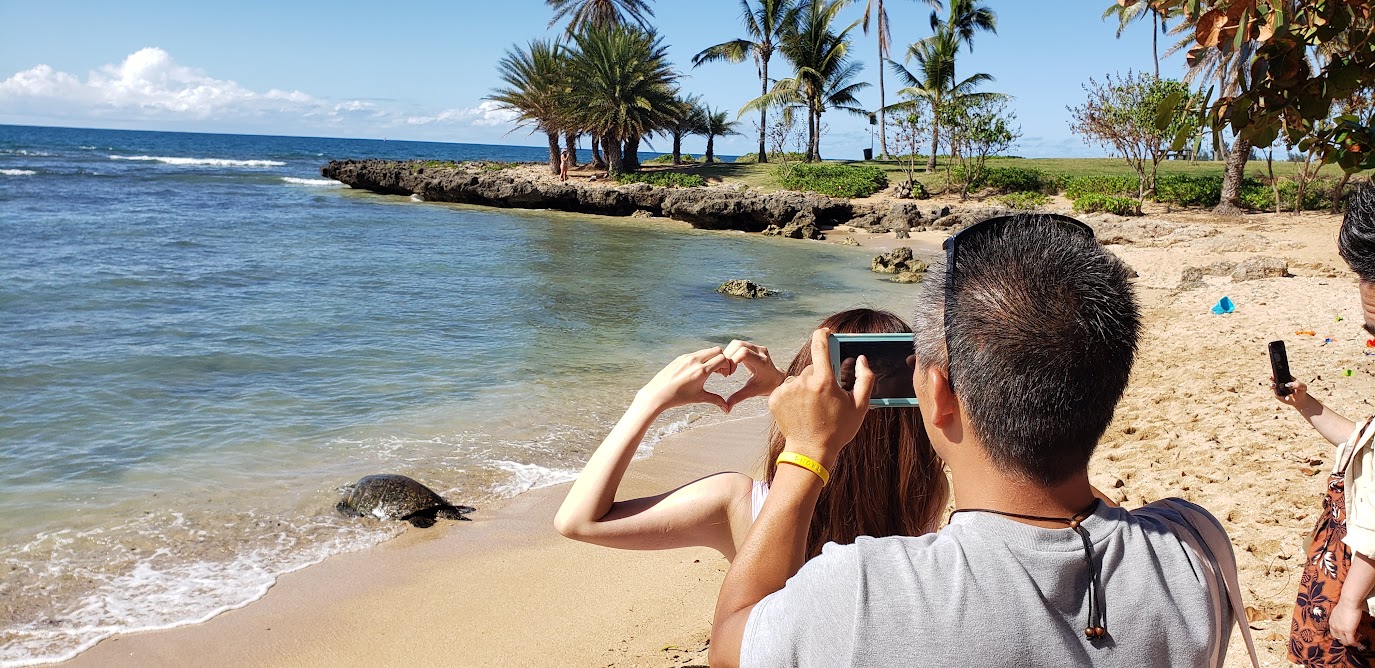
Welcome to Colorado State University’s new podcast, The Audit, featuring conversations with CSU faculty on everything from research to current events. Just as auditing a class provides a fun way to explore a new subject or field, The Audit allows listeners to explore the latest works from the experts at CSU.
(Note: This interview transcription has been lightly edited for length and clarity)
The first time I became aware of your research was the Safe Distance Wildlife Project that was published in 2019. You created a social media campaign for national parks that featured posts with wildlife photos and quirky puns like, “Don’t make it awkward. We ‘bearly’ know each other.” One of your latest projects involves studying public adherence to a new regulation as part of Hawaii’s Marine Mammal Protection Act to protect spinner dolphins. You had to get a little creative with how you did this project.
With the National Park Project that you just referenced and the one prior to the most recent one with sea turtles, we chose the topics that we did because we wanted to try to control as many things as possible. Not that wildlife behavior is the most easy thing to control, but we tried to pick wildlife and settings and places where there would be less of a variable of change. But when we were discussing what we were going to focus on for this most recent project and where we’re going to test how social marketing might encourage people to follow wildlife viewing distances? We said, “Oh, well, we could do turtles again. We could do monk seals. Sure, you could do spinner dolphins, but don’t do spinner dolphins. It’ll be really hard.” And I was like, “Challenge accepted.”
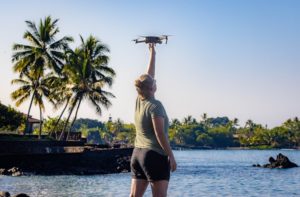
I knew that regulations were coming down the pipeline and went into effect one month prior to our implementation of the study in the project in Hawaii. And so, as I started planning how we were going to measure whether or not our social marketing approach was changing people’s behavior, I was talking to the natural resource manager with National Oceanic and Atmospheric Administration, and I was talking about getting in the water and being on a boat with snorkels and GoPros. And he said, “No, you’re not. You have to follow this law, too.”
That got me thinking about how the heck are we going to do this and do this accurately? Because when dolphins are swimming, they’re moving all around in the water and people are moving around in the water. I began to try to imagine how I was going to accurately judge those distances from the shore. I was talking to my grad student here at CSU about it, who has her bachelor’s in marine biology. And she said, “You know, in my work with the Monterey Bay Aquarium, they were doing drone surveillance of the otters and sharks.” And she said, “How about drones?” I knew we had drones in our department. And then I found out there is a Drone Center here at CSU and a whole training program that I can attend in October and get my drone pilot’s license. One thing led to another and suddenly I had my drone pilot’s license.
Going through that experience though helped me learn that I’d be better off hiring really talented drone pilots since I was such a newbie. But it was helpful to know all the regulations and know the capabilities of the drone so that I could direct the pilots so that we would get the most accurate and best possible data through that drone video footage.
Much of your work, particularly here at CSU, focuses on studying how communication influences human wildlife interactions. And I wondered, how did you become interested in this particular field of research?
I sort of fell into it a little bit with a bit of luck and strategic placement. Being here at CSU certainly has had an advantage with its proximity to so many national parks and some of the federal agencies are located here in Fort Collins and regularly work with CSU.
I originally started out studying to be a veterinarian. I always wanted to help animals. Even on a family road trip, I probably imagined doing the Junior Ranger activities and that I might even be a park ranger or something like that.
But I came to realize that my talents were less suited for organic chemistry and better suited for graphic design. I was interested in web design and writing and speech, so I figured I could use my communication superpowers to instead help animals. Now I work with veterinarians and wildlife biologists and people managing natural resources because they see the value of using better communication science and behavior change science to complement their natural resource protection efforts.
What you’re doing is really important, especially now, because with the pandemic encouraging folks to be outside more and social media influencers trying to get that viral photo or video, it seems like we’re seeing an increase in the number of dangerous interactions between humans and wildlife. Like that case just recently, the Colorado Springs man who was gored by a bison in Yellowstone when he got too close. Are people taking more risks to get closer to wildlife? And how do you target communications campaigns to address those issues?
It’s a little bit of a chicken or the egg conundrum. There are a lot of factors that are resulting in increased numbers of people getting closer or interacting with or getting injured by wildlife. So, we can’t necessarily point to social media or people wanting to get that viral photo.
People have always wanted to have wildlife experiences and encounters. And we’re certainly seeing, as you said, an increased call to get outside and this generational turnover of “What is a vacation?” and “What kind of vacation can I afford?” Especially for millennials and Gen Z. They’re going camping or going out in nature for an enriching experience, and I think those wildlife encounters are potentially more likely in those cases.
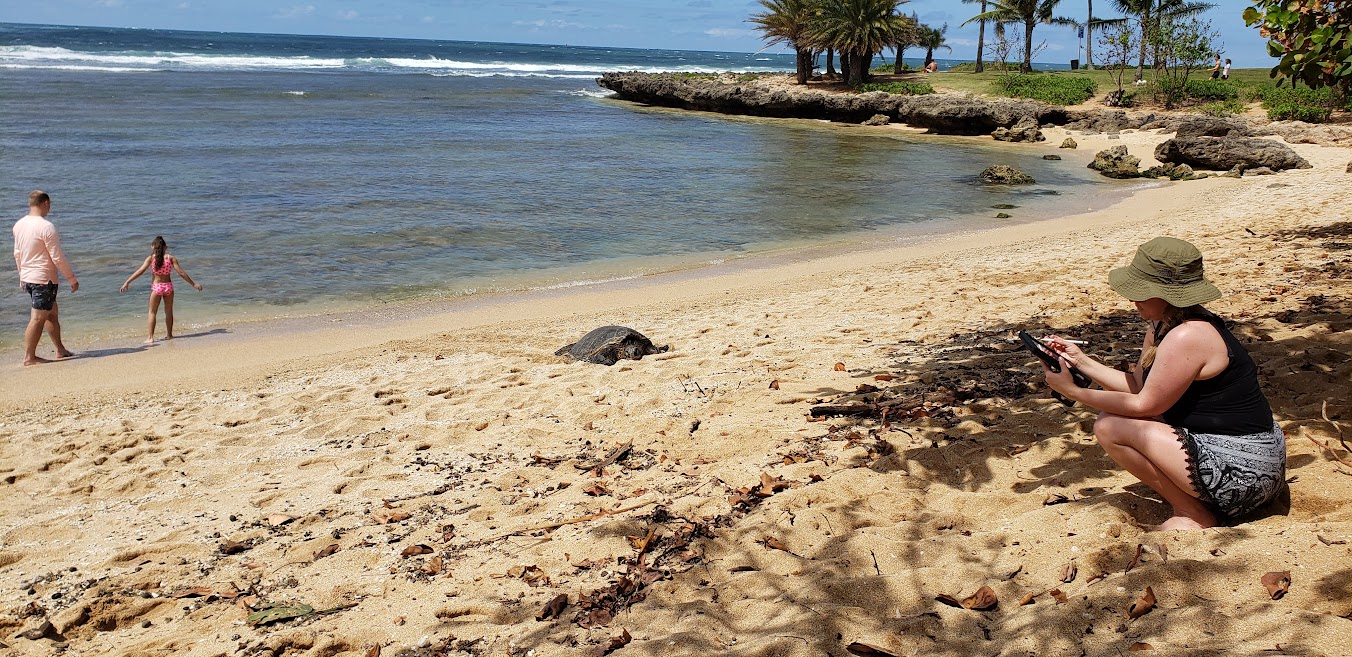
Although there appears to be a lot more people getting closer to wildlife, it may be to get a photo and it may be for a lot of other reasons. In using communication to try to encourage people not to ‘risk it for the biscuit’ and get that photo, first you have to ensure that you’re reaching them. The information ecosystem is rich so you have to think about gaining people’s attention. You must know where they’re getting their information and how to best reach them.
Secondly, you’ve got to design that messaging once you’ve gained their attention to persuade them. There’s lots of different techniques and ultimately knowing your audience, and the context and the behavior that you’re trying to change, helps you best design that persuasive message. Some foundations in terms of behavior change we try to message are that the desired behavior of staying a safe distance from wildlife, for example, or respectful distances as being easy, enjoyable and even popular.
And then third, there’s other techniques in our recent campaigns with the National Park Service and NOAA in which we’ve been promoting replacement behaviors, using forced perspective photos like creating heart hands. You have that animal off in the distance, of course, and it fits inside the heart to show you protect wildlife. So, people actually get a creative photo. We know that they want a good photo; this is just a different kind of good photo. We encourage those replacement behaviors to help people get that enjoyment and that fun experience out of it, and make it seem popular to encourage them to do the right thing.
I’m also curious about kind of the opposite approach, a more stick than carrot kind of thing, that makes getting within a certain proximity to wildlife maybe illegal, as you mentioned with the spinner dolphins in Hawai’i or even this idea of kind of publicly shaming people who don’t follow the rules and get too close to wildlife. How effective are those tactics?
That’s a really good question. Having laws or regulations in place is a great signal to people that others are also doing what this law either is encouraging them to do or discouraging. So, it’s a nice signal. Now, they might not always agree with the exact stipulations of that law. I always use the example of speed limits.
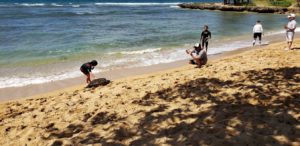
Speed limits can be helpful for discouraging speeding at 50 miles per hour when they set the speed limit to 35 miles per hour. But you probably have a lot of people who are like, “I’m going to go 39 because that says 35 and 39 is close enough. I’m not going to get in trouble.”
Law enforcement isn’t always there either. That was something that NOAA that mentioned was where they need support. They need good communication in place, not just to communicate that this is a law and you can get fined, but to encourage people to do the right thing, in addition to the law. That’s where social marketing comes in.
In terms of shaming people, it feels good from the shamers perspective to shame people. It’s always very easy to think that you wouldn’t be susceptible to the same temptations when you see somebody else getting close to that bison, for example.
But when you shame people, it can backfire because people can react really strongly and negatively to that, especially if they’ve engaged in other behavior in which they’re trying to do the right thing – maybe they have other things that they do in their life to protect wildlife like making donations or being careful about their trash. But they saw that bison and they wanted to get that photo and they thought the bison didn’t look that threatening. So, when you shame people for that, they start to react negatively and can be less likely to engage in the behavior that you’re asking them to do.
But guilt appeals, or subtle guilt appeals, work well when you’re talking about encouraging people’s future behaviors. So, you’ve got to think about how you use guilt in a more strategic way and understand the differences between shaming somebody for their past actions versus using subtle guilt appeals to encourage positive behavior in the future.
Can you give me an example of an effective guilt appeal?
So, in our most recent project that we’re working on right now – I’ll be in Grand Tetons testing this out – we’re using subtle guilt appeals to try to encourage campers to properly store and manage their wildlife attractants. The hook of the campaign is “Clean campsite, clear conscience.”
The description related to that is reminding people that they’re there at the park to have a great camping experience, to relax and unplug and recharge. Obviously, wildlife coming through and taking all your things or damaging them or causing harm to your fellow campers or even causing harm to the wildlife, that all puts that at risk. So, we use that as our subtle guilt appeal in that campaign to try to encourage compliance. Based on our previous studies at five other parks, we’ve seen positive effects.
Many of us know the right thing to do. We know that we’re not supposed to get too close to wild animals. And yet when there’s a cute, fuzzy animal that’s right there, it can be very hard to actually do that right thing. So, one last thing I wanted to ask you about was how has your work influenced you personally in your interactions with nature?
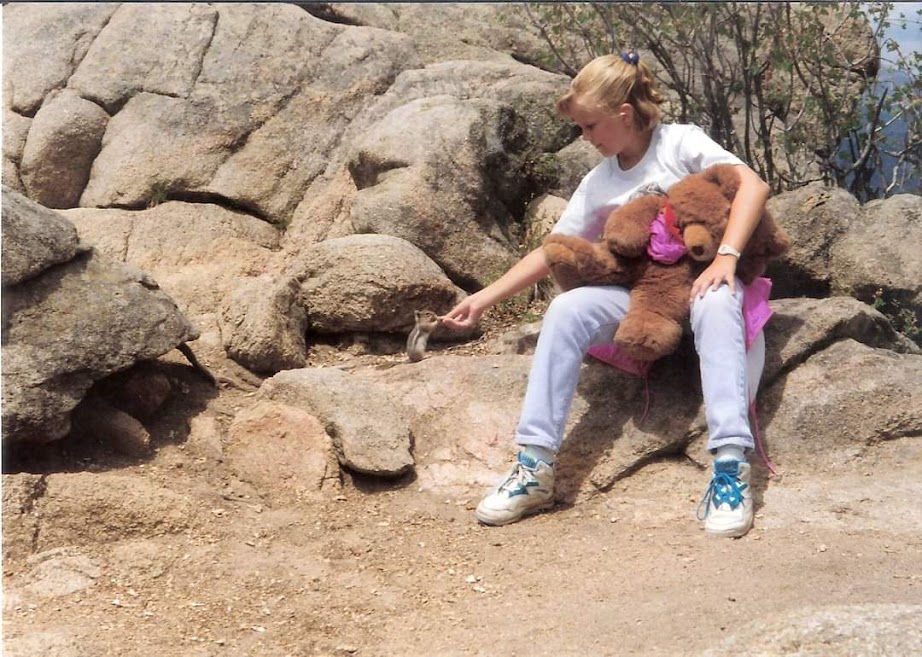
I think I’m really annoying to be out in nature with now because I’m watching everybody so when we see a wild animal, I feel like even if their gaze isn’t directed toward me, they know, Katie’s watching.
I always think about an experience I had in Rocky Mountain National Park when I first started this work. I was hiking with my daughter, who was just a toddler at the time, and my parents who were visiting. I was telling my parents about the project and – there’s other things that affect wildlife, like the crumbs that people drop, scavengers will look for those areas where people regularly leave crumbs behind even if they’re not intentionally feeding wildlife – and I was watching my dad eat popcorn or chips or something, and he was dropping some crumbs. So, I’m frantically picking up the crumbs, looking through the gravel to pick up the littlest bits. And he said, ‘You know, when you were in Rocky Mountain National Park as a kid, you were hand-feeding the chipmunks and I have photographic evidence.”
Busted.
Yeah, I was busted. And he sent that photo to me. So, I’m always reflecting on my own behavior and realizing how challenging it is, even for me, knowing the right thing to do, knowing what should theoretically work on my own behavior or my family’s behavior. And it just makes it a little bit challenging, but always insightful.
About The Audit
Colorado State University’s new podcast, The Audit, features conversations with CSU faculty on everything from research to current events. Just as auditing a class provides a fun way to explore a new subject or field, The Audit allows listeners to explore the latest works from the experts at CSU.